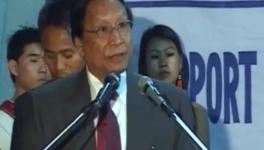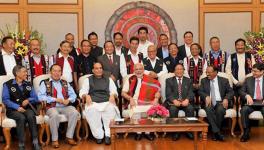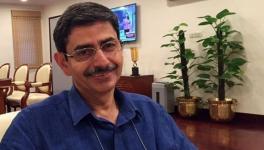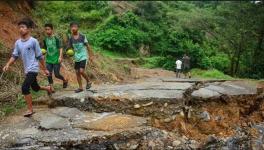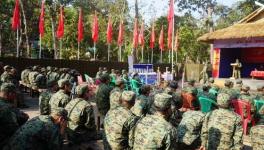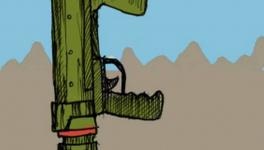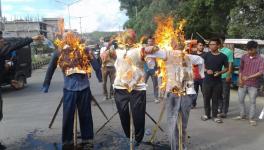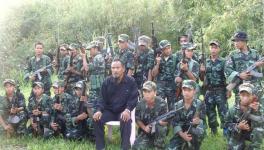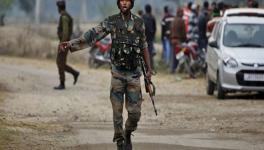Konyak Led Faction of NSCN(K) to Join Indo-Naga Talks
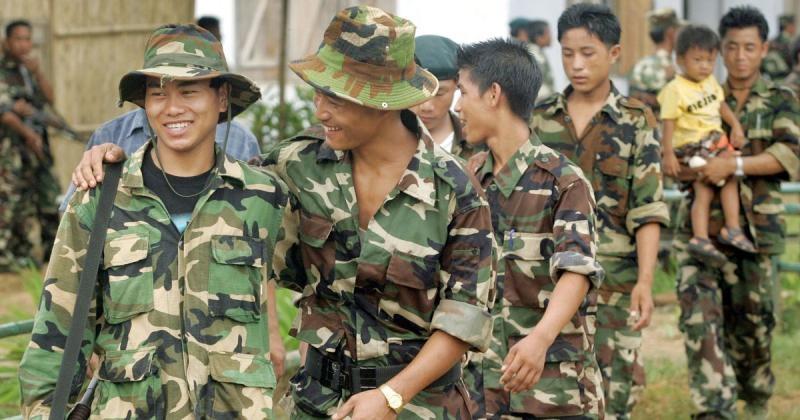
Representational image of Naga cadres
The ousted former leader of the National Socialist Council of Nagaland (Khaplang) [NSCN(K)], Khango Konyak will be included as a party in the ongoing talks between the Government of India and representatives of the various Naga armed political groups. The Indian media appears to be ecstatic about this development and seems to be portraying it as the beginning of the end of Indo-Naga armed conflict. This position is predicated by the fact that when Konyak was ousted, he left with a sizeable number of ‘Indian’ Nagas. However, some of the strategically and tactically more proficient members of the NSCN(K) who also happen to be ‘Indian’ Nagas remained in Myanmar to serve under the new Chairman, Yung Aung.
In mid August, reports emerged that Konyak had been relieved of his duties as the Chairman of the NSCN(K) for taking unilateral decisions without following the accepted procedure. The NSCN(K) had thus appointed Yung Aung – the late Shanwang Shangyu Khaplang’s nephew – as the new Chairman. The NSCN(K)’s release also mentioned that in recognition of Konyak’s past contributions to the Naga cause and his years of service, he would be allowed safe passage out of the NSCN(K)’s territory.
Also Read | What the NSCN(K) Coup Could Mean
Following this, reports emerged that Konyak along with some of his supporters were camping across the border in Myanmar. However, the most notable absence among those with Konyak was that of the Deputy Commander in Chief, Niki Sumi, who was one of the masterminds behind the 2015 attack on the 6 Dogra Regiment in Manipur. Sumi has, however, retained his position in the organisation, indicating that there was probably no tussle between ‘Indian’ and ‘Burmese’ Nagas since Sumi is from Zunheboto in Nagaland.
On October 16, Konyak had crossed the border to a welcome reception in Yongkhao village in the Mon district and was sending feelers to the Indian authorities. However, despite knowing where Konyak was, the Indian Security Forces did not take any action. This may indicate that Konyak sought safe passage from the Government of India, possibly on the condition of joining the peace talks.
Also Read | Nothing to Show: Three Years of the Framework Agreement
Infighting Ensues between Factions in NSCN(K)
In the meantime, Konyak’s group had released statements accusing the Yung Aung-led faction of selling out the Naga cause by joining the Nationwide Ceasefire Agreement (NCA) in Myanmar. Konyak’s group further maintained that they were the rightful NSCN(K) and that the others had usurped them. The Yung Aung faction, however, did not stay quiet for long and issued statements to the effect that Konyak’s group had no right to call themselves the NSCN(K). They further affirmed their commitment to the Naga cause.
While the two factions were engaged in a public war of words, on October 1, it was reported that the head of the National Socialist Council of Nagaland (Isak Muivah) (NSCN(IM)), Thuingaleng Muivah was admitted to an undisclosed private hospital in Delhi. Spokespersons for the NSCN(IM) have said that Muivah was not suffering However, there has been no news of him being discharged from the hospital for over six weeks since he was reportedly admitted.
Also Read | Sovereignty, Integration and the Naga Peace Process
From the Indian Government’s perspective, Muivah’s ill health may be an opportunity to extract a deal before he passes away. Konyak wishing to join the peace process at this stage may also indicate that the deposed chairman was desperate to return home, but without the Indian Government on his back. On the other hand, that he is joining the talks as a representative of NSCN(K) may anger the Yung Aung faction which could lead to a different kind of conflict.
Another complication is that the Yung Aung faction has not broken away from the United Liberation Front of Western Southeast Asia (UNLFW). Similarly, the UNLFW has survived over three years without descending into infighting and ethnic conflict. It is unlikely that Konyak’s exit has weakened the NSCN(K) in any major way, unless he provides the Indian agencies with details on the group’s movements and funding. Even so, the fact that the NSCN(K) has remained with the UNLFW can be explained either as an alliance of convenience, or a change in the nationalist narrative.
Get the latest reports & analysis with people's perspective on Protests, movements & deep analytical videos, discussions of the current affairs in your Telegram app. Subscribe to NewsClick's Telegram channel & get Real-Time updates on stories, as they get published on our website.









